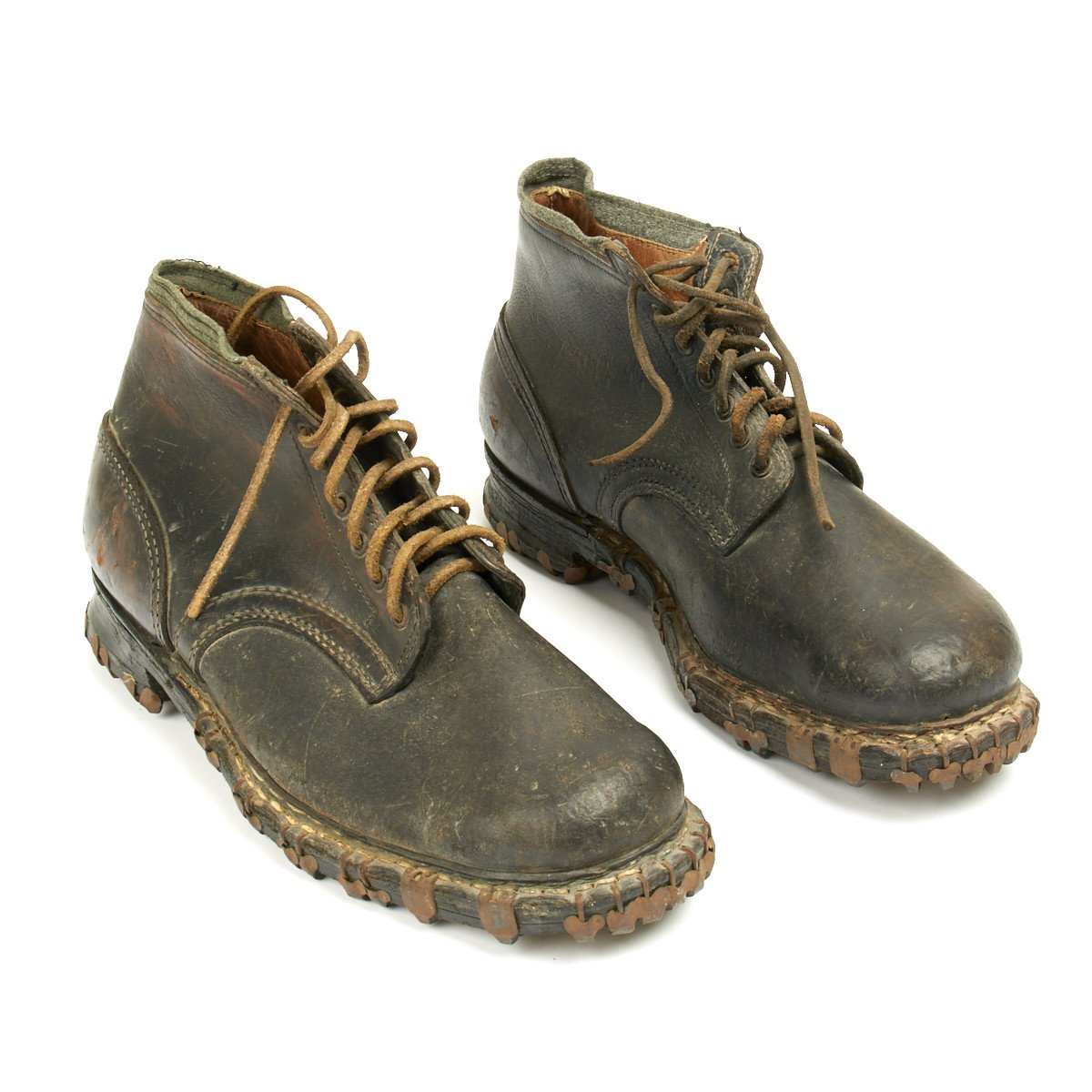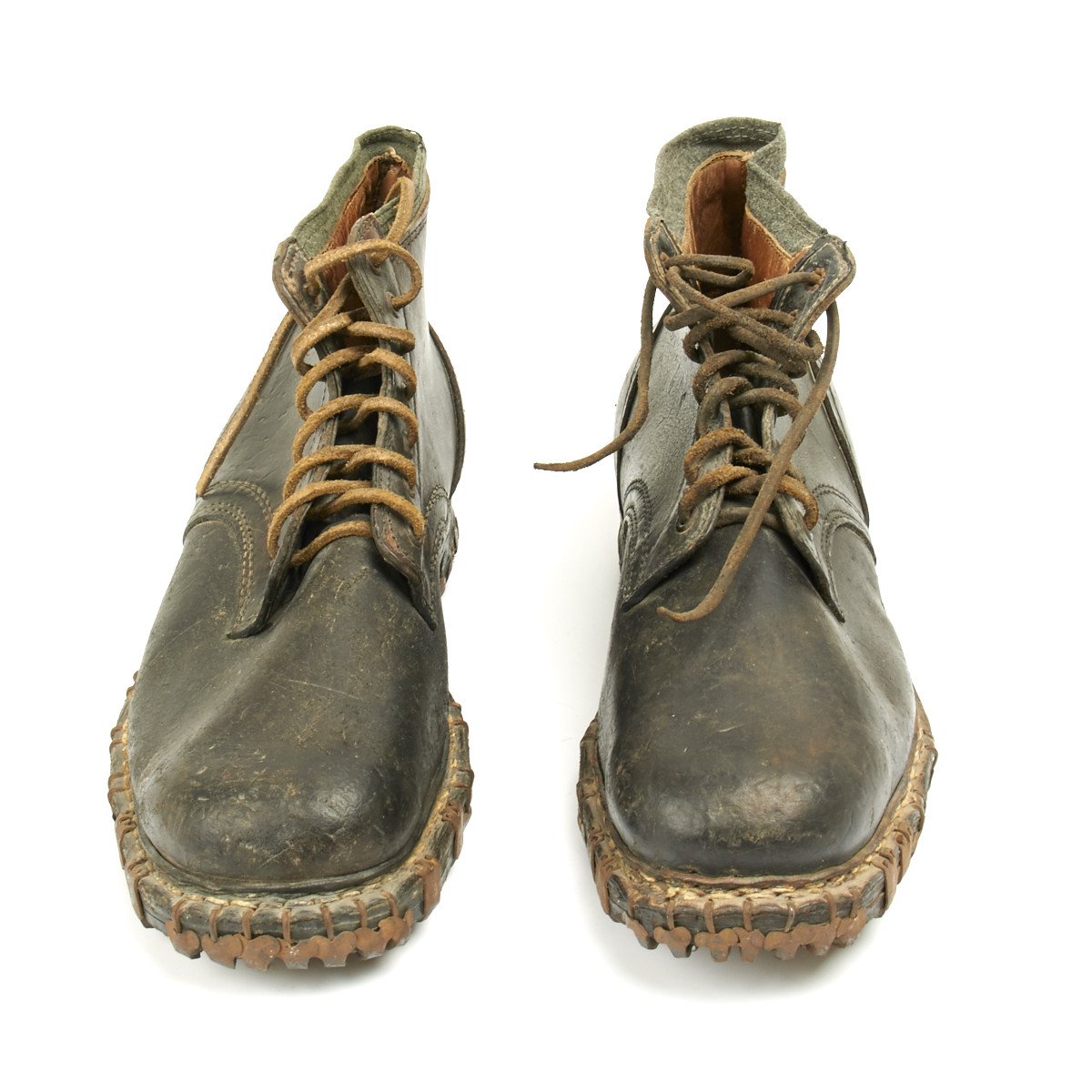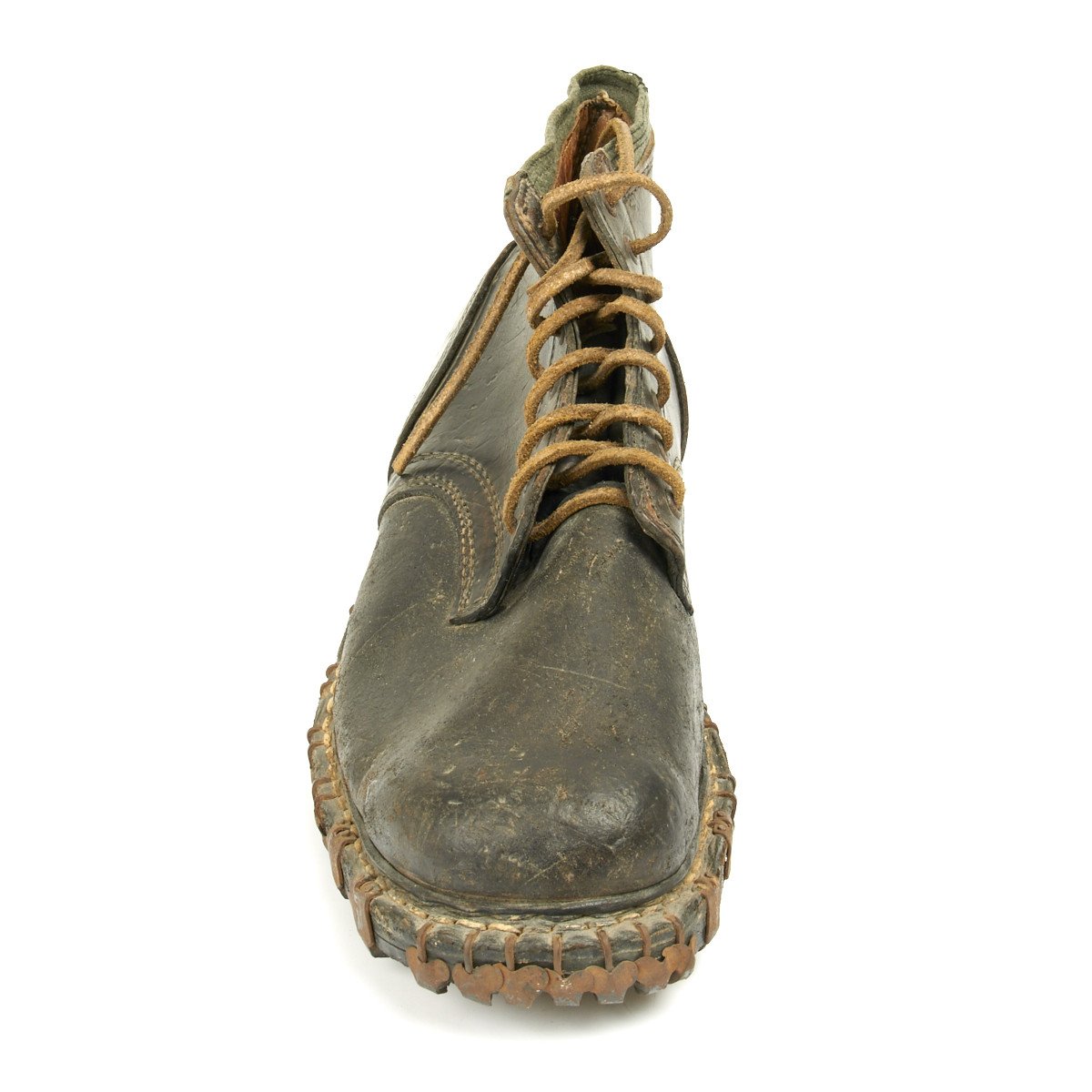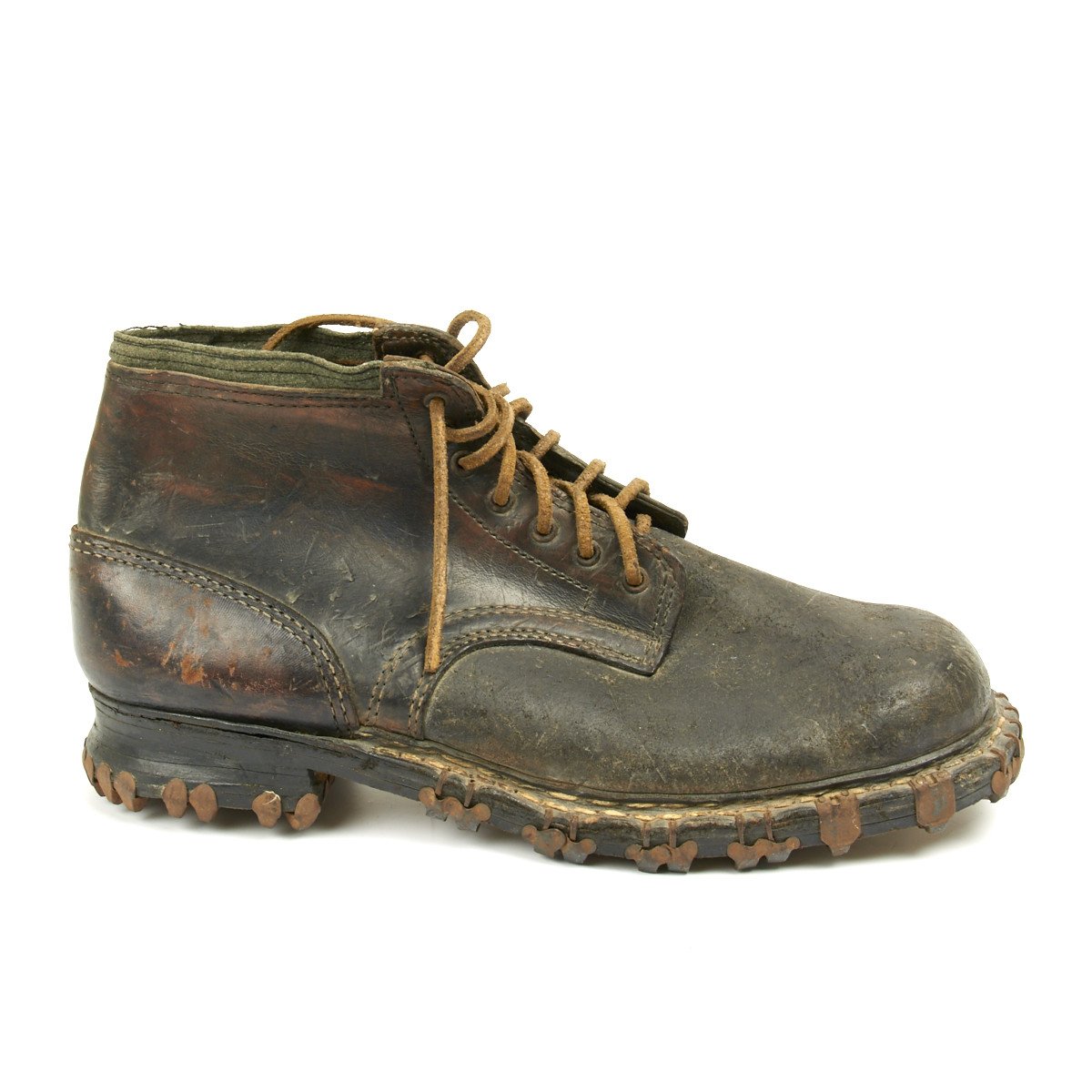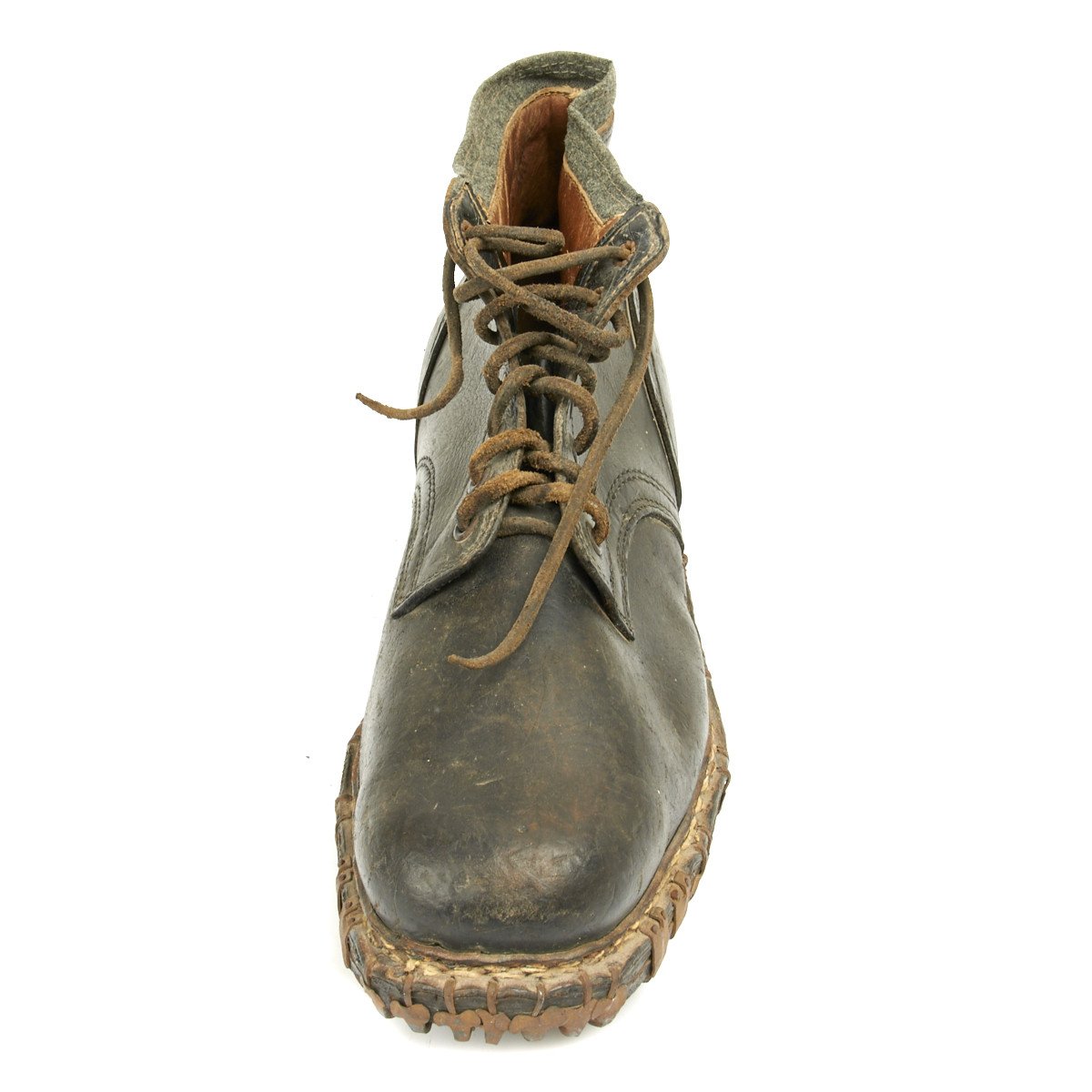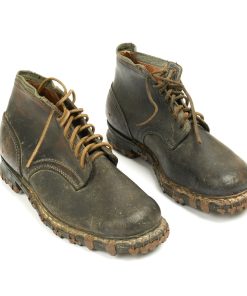Original German WWII Gebirgsjäger Mountain Trooper Boots – Maker Marked Original Items
$ 795,00 $ 238,50
Original Item: Only One Pair Available. A beautiful 100% genuine pair of large (31 1/2 cm approx size 13 US) Gebirgsjäger Mountain Trooper Boots in black leather. Offered in very good condition certainly solid enough to wear for historical impressions or to correctly complete a display, these are exceptional in the sense that they are GERMAN made and issued.
They are nicely marked and numbered, all hob nails are present as are the steel toe picks plates. They are marked on the soles with the size and makes name GEORG MULLER and along the leather ankle 31 1/2 6 M 43 7E6..
The German Gebirgsjager (mountain infantry) of WW2 found its origins in the Alpenkorps of both the Royal Bavarian Army and the Austrian Alpenkorps of WWI, where they were used to defend the mountain passes from their Italian equivalent, Alpini. They were trained to operate in mountainous terrain and cold weather. The Austrians chose the edelweiss flower as their symbol in 1907 and this eventually became the universal emblem worn by all mountain troops. The flower only grows at higher altitudes and means “noble purity.” Men from the Germanic tribes of pre-Christian Europe would bring these blossoms down from the mountains for their betrothed.
That somewhat romantic notion endured through the political turbulence of the 1920s and the NSDAP dictatorship that followed. Both Austria and Germany chose to grow their mountain infantry units in the 1930s. When Germany annexed Austria in 1938, the Deutsches Gebirgsjager Divisions were formed. There were 11 divisons of Das Heer (the regular army); some were mixed Austrian and German, some were exclusively German, and 8 divisons of Waffen SS with the exception of the 6th SS Gebirgsjager Division Nord, the SS divisions were raised from the local populations of the Balkan countries and primarily assigned to anti-partisan, rear guard duty.
Gebirgsjager divisions were used in virtually every theatre of WWII: including the invasions of Poland in 1939, Norway in 1940, Africa, Crete and the Balkans in 1941, and Soviet Russia in 1941. Throughout the war they were primarily concentrated in the mountainous areas on the Russian Front: in the Norwegian/Finnish/Lapland region to the north and the Caucusus region to the south. As the Allies forced Germany to withdraw from its conquered territory, Gebirgsjagers often fell into the same lines with regular infantry. In the final months of the war, when the quality of new conscripts was poor, Gebirgsjagers were often deployed at strategically critical areas. For this reason, it seems that they did not survive the war in great numbers.
Gebirgsjagers wore essentially the same core uniform as regular infantry with some important exceptions the mountain boots (Bergstieffel).
Fast Shipping with Professional Packaging
Thanks to our longstanding association with UPS FedEx DHL, and other major international carriers, we are able to provide a range of shipping options. Our warehouse staff is expertly trained and will wrap your products according to our exact and precise specifications. Prior to shipping, your goods will be thoroughly examined and securely secured. We ship to thousands clients each day across multiple countries. This shows how we're dedicated to be the largest retailer on the internet. Warehouses and distribution centres can be located throughout Europe as well as the USA.
Note: Orders with more than one item will be assigned a processing date depending on the item.
Before shipping before shipping, we'll conduct a thorough inspection of the items you have ordered. Today, the majority of orders will be delivered within 48 hours. The delivery time will be between 3-7 days.
Returns
The stock is dynamic and we cannot completely manage it because multiple stakeholders are involved, including our factory and warehouse. So the actual stock may alter at any time. It's possible that you may not receive your order once the order has been made.
Our policy is valid for a period of 30 days. If you don't receive the product within 30 days, we are not able to issue a refund or an exchange.
You can only return an item if it is unused and in the same state as the day you received it. You must have the item in its original packaging.
Related products
Uncategorized
Band of Brothers ORIGINAL GERMAN WWII Le. F.H. 18 10.5cm ARTILLERY PIECE Original Items
Uncategorized
Uncategorized
Uncategorized
Uncategorized
Uncategorized
Uncategorized
Armoured Fighting Vehicles of the World: AFVs of World War One (Hardcover Book) New Made Items
Uncategorized
Uncategorized
Uncategorized
Angolan Rebel 1970s era 60mm Inert Display Mortar from Angolan Civil War Original Items
Uncategorized
Uncategorized
Uncategorized
Armored Burgonet Helmet & Polearm from Scottish Castle Leith Hall Circa 1700 Original Items
Uncategorized
Uncategorized
Uncategorized
